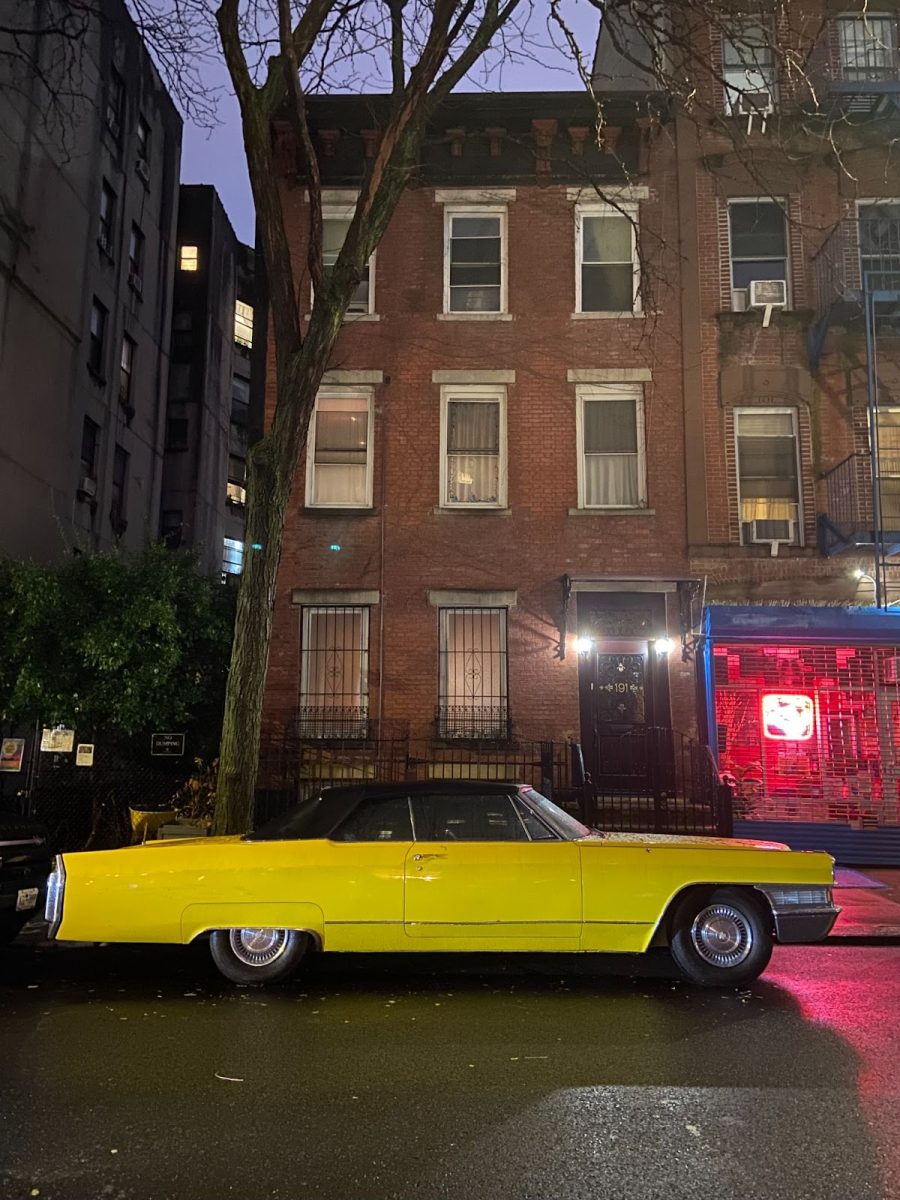Walking around New York City, the typical sedans and crossovers overwhelm the streets, but once in a while you might spot one of the more interesting cars driving by. Parking in New York City is hard to come by. To make matters worse, city roads are riddled with potholes, trash, and shrapnel. In the winter, roads are salted and cars rust out.
Despite these issues, New York City is an epicenter for car enthusiasts from the tristate area. Specialist mechanics in the area help people keep their unusual cars going. In addition, New York City is home to numerous events for car enthusiasts such as car shows and “cars and coffee” events.
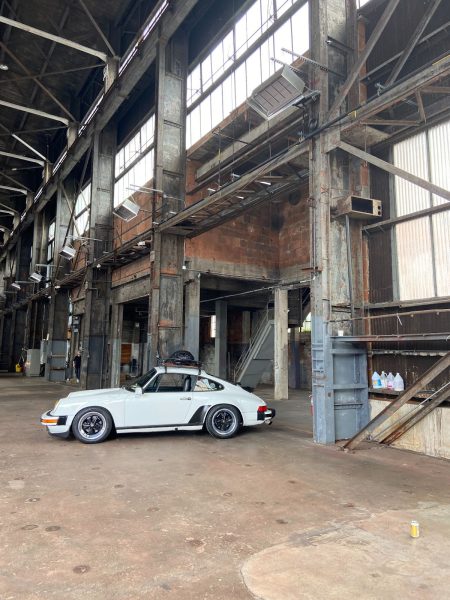
The variety in the New York City car community makes it stand out. There are two types of owners, those that store and those that use their cars. Some owners collect cars worth millions of dollars. These cars, whether antique or brand new, are fast and expensive. These owners mostly keep their prized cars in private garages. On the other hand, some car owners keep theirs parked on the streets of New York City. These cars may seem mundane to the average pedestrian but have significance to those familiar with cars.
On a walk around my neighborhood, I spotted one of these cars – a 1984 Ford Crown Victoria. This car was red on red, with a cherry red exterior and a red velour interior. While spotting a Crown Victoria is rare today, they used to be a common sight in the 1980s when they were first released. The Ford Crown Victoria used to be police cars and taxis, roaring with a powerful engine that made them popular. Today, Victorias are generally underappreciated, yet the allure of their time-capsule quality remains.
The owner of the Crown Victoria is Yaan, who was selling clothes out of his car when it caught my eye. When I asked him why he drove it, Yaan said, “For this car, before I bought it, I was just looking. I’ve had a lot of old cars, but I’ve never had an old kind of town car. And my friend had an old 1980’s Cadillac, so I liked that thing, driving around in it. I moved back to Long Island. I figured it being Long Island, I could find some old Italian-Jewish Grandma car from back in the day, which I did find. This thing had 50,000 miles on it when I bought it. So this old woman in Bay Shore, she just, you know, bought milk from the store with it for 20 years, you know? And it’s cheap, you know?”
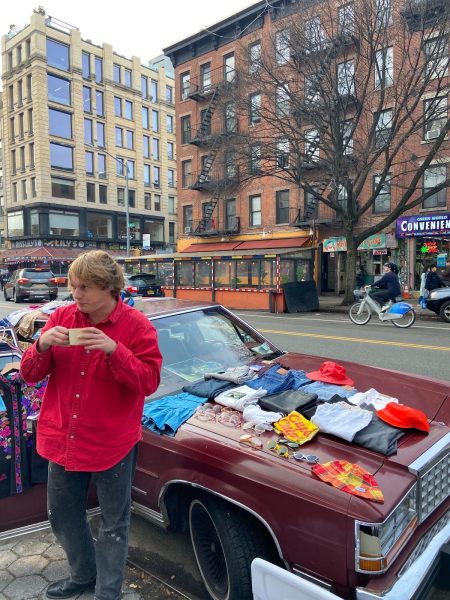
Many people are opposed to owning and daily driving older cars because they are afraid of how unreliable they are. According to Yaan, this conundrum is easily avoidable with proper maintenance. “I’ve never really had a problem with any of the old cars I’ve had. Driving a car like this in New York though, people always trip out about it being an old car. I’ve owned a lot of old cars in the past. I had, you know an ‘87 Mercedes 240D. Those things will outlive you. I’ve had a Ford Econoline, a 1991 Toyota Previa, and a ‘84 Ford Crown Victoria. I just dealt with fluids and regular maintenance with all of them.”
Some of the cars Yaan mentioned here are still popular in the car community, despite their age. The Toyota Previa has a following for its unique configuration — the engine is placed in the middle of the car underneath the passengers as opposed to in the front like most cars, and the car is supercharged. The engine placement allows for better handling of the car, and the supercharger provides more power. The Mercedes 240D is appreciated, just like all Mercedes cars of the era, for its excellent build quality and reliability.
In car ownership, replacing fluids is considered a responsibility regardless of the age or condition of the car. This consists of changing the engine oil so the engine runs smoothly, and changing other fluids such as coolant to maintain a constant range of temperature. To have a 30-plus-year-old car that has not had issues that require more work is remarkable.
A common job for cars that have gone beyond a certain mileage is replacing the timing chain, which keeps the engine running properly. This is a job that often requires the engine to be taken out of the car and thousands of dollars spent, and work like this is what scares a lot of people away from buying old cars. This is done in new cars routinely, so if an old car doesn’t need it, the previous owner likely sorted the car fully.
Cars such as the Crown Victoria are surprisingly more common than you might think, that is, if you know what you’re looking for. Cars like the Volvo 240 and Mercedes-Benz W123 have a prevalence to them that is akin that of new cars. Yet despite the persistence of owners to maintain their old cars, problems are inevitable. With old cars, it’s hit or miss. People like Yaan may have a good experience with their car, but many others face issues with their older cars. It is unfortunately more common to see older cars break down on the side of the road.
The age of the car means older technology for one, but the fragility that comes with age of some parts can be the most compromising to the car. Parts like rubber hoses can dry rot with age and cause issues like coolant leaks. The worst thing about the age of these parts is that they have been exposed to the world for a lot longer than parts of new cars. Some of these cars even pose fire risks since rodents may have chewed the internal soy-based wiring in the car. This material is still used in modern cars, but the age of older cars means that it has spent more time sitting and this exacerbates the risk of rodents getting to the car.
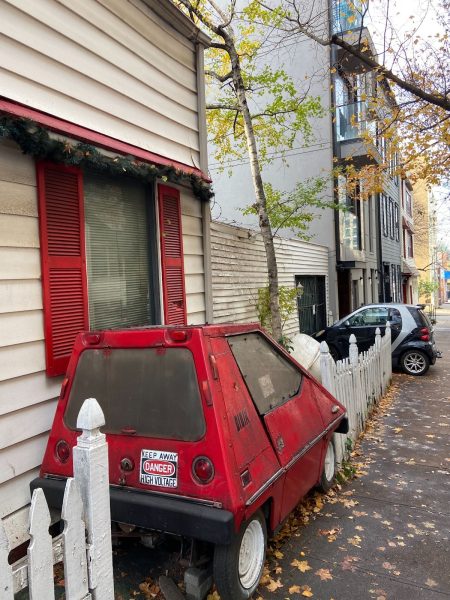
As an extra layer of difficulty, parts are very difficult to get for older cars. Two of my favorite cars I have seen on New York City streets are a Saab 900 and a Peugeot 405. These cars are rare and unloved by the masses which makes them interesting to me. Saab went out of business in 2011 and Peugeot withdrew from the United States in 1991, although they still sell cars overseas. This presents a big issue for the owners if their cars have problems. Primarily, it makes replacement parts harder to find if something breaks.
For the Saab 900, a single halogen headlight can cost as much as 500 dollars due to the rarity of the part, with an average price at around 300 dollars. For a comparable newer car with more expensive LEDs, a pair of headlights can be found for 500 dollars. The Saab 900 I spotted was missing some parts, but it is clearly loved. The owner’s vigilance is commendable given that it is street parked and every little ding could mean months of searching for the right component.
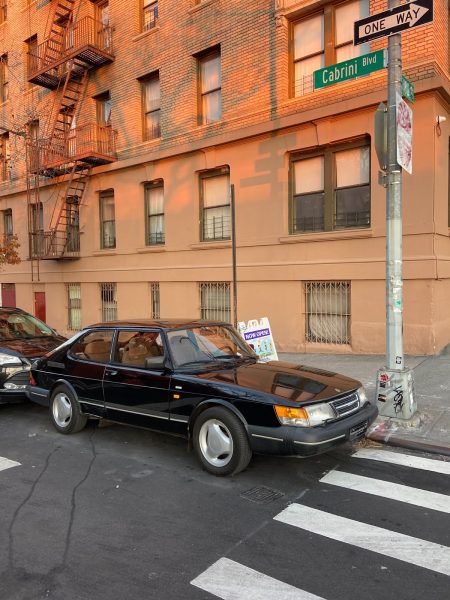
In the case of the Peugeot 405 that I saw, the owner clearly has some difficulty finding the right parts. The fender – the front left body panel of the car – has mismatched paint. For the average car, finding the fender you need in the color of your car at a junkyard is not difficult. This Peugeot is known by locals to have been in the same neighborhood in lower Manhattan for decades and is beloved to those who appreciate its rarity.
Other sights to behold are the immaculate rare cars parked on the street as if they were just any other car. On streets in my neighborhood, I have seen a rare Alpina B3. Alpina modifies BMWs when they are new, and the cars they produce are exclusive and often rare. The B3 I saw was from the 1980s or 90s, with perfect paint and no rust. It looked perfect, yet every time I have seen it in the last five years, there has been a mountain of garbage leaning up against it. For a car to appear in showroom condition after years on New York City Streets shows that a lot of care is put into it.
At car events, the well-kept cars come out of the woodwork. In the spring of 2023, I visited a car show held in the Brooklyn Navy Yard. Cars were parked in old warehouses and close to the waterfront. Against the back wall of a warehouse, there was a line of over ten old BMWs. The streets were packed with interesting cars, including a Volkswagen SP2 imported from Brazil. The SP2 is a two door sports car that was built from 1972 to 1975 and was only available for purchase in Brazil when it was new, even though Volkswagen has always been primarily based in Germany.
Across time, New York City has always been home to numerous car events like the one I visited in Brooklyn. Some are private, others have entry fees, but many are free and open to the public. An example of this is the “Attack of the Racks” event that is held in a private car club in Manhattan, but non-members are welcome. This event is centered around interesting cars with roof racks mounted on them. Aside from events, New York City has also regularly held meets. These types of meets occur all over the country, and are often built around “cars and coffee.” In this type of meet, somebody brings coffee, and everybody else brings their cars, and they talk and hang out with like-minded individuals.
The steadfastness of New York City car enthusiasts in maintaining and driving their cars in the grimy conditions of New York City streets is admirable. Walking around the city, if you look hard enough, you will always be able to find interesting cars, even if many of them disappear for the winter.
This community is one that will stick around. Recently founded at Bronx Science, the Automotive Club plans to bring the community of young car enthusiasts at the school together similar to the ways in which cars and coffee events bring car owners together.
“I’ve never really had a problem with any of the old cars I’ve had. Driving a car like this in New York though, people always trip out about it being an old car. I’ve owned a lot of old cars in the past, I had, you know an ‘87 Mercedes 240D. Those things will outlive you. I’ve had a Ford Econoline, a 1991 Toyota Previa, and a ‘84 Ford Crown Victoria. I just dealt with fluids and regular maintenance with all of them,” said Yaan P.

